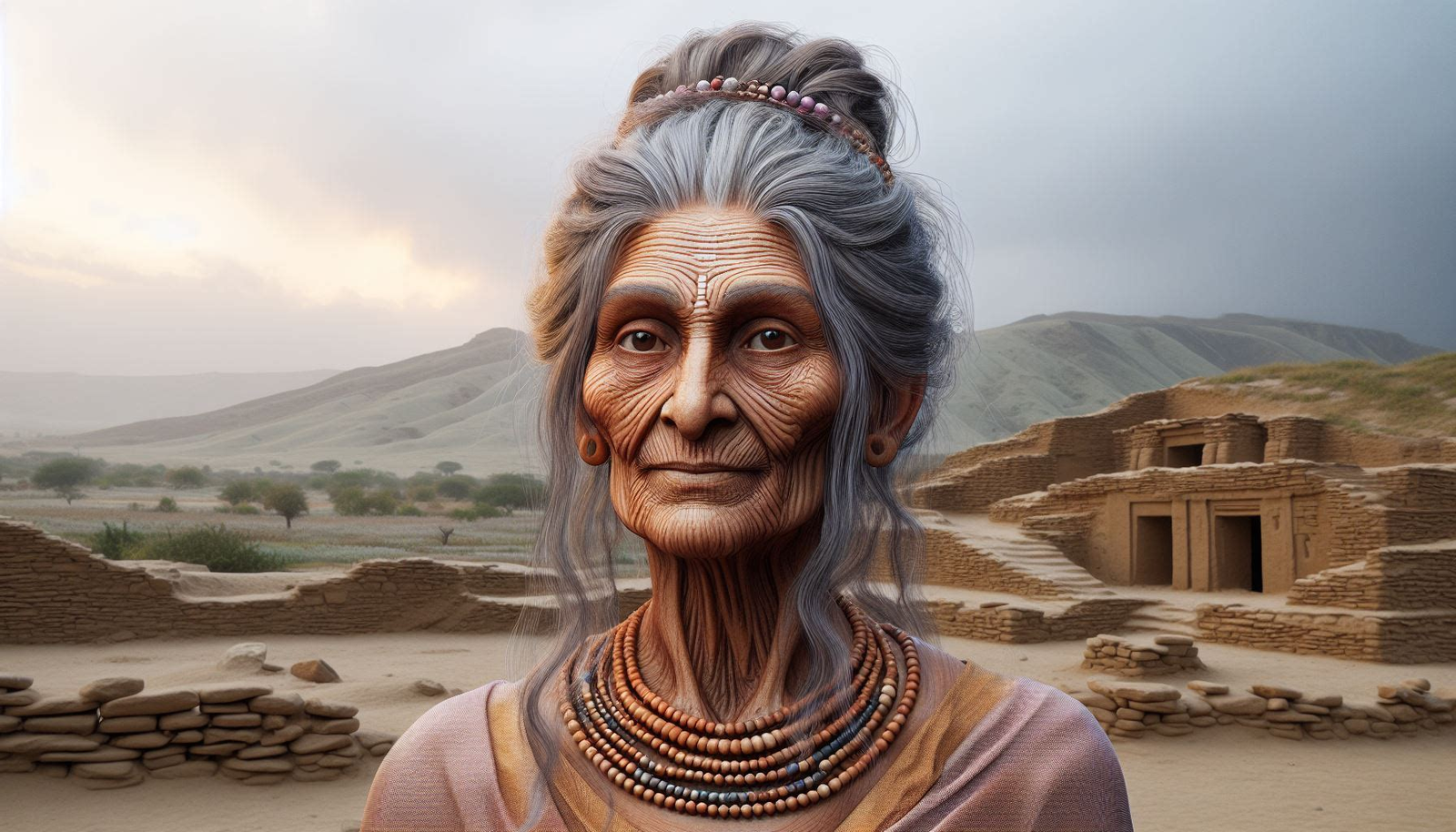A Glimpse into the Harappan Life
About 150 km from Delhi, along the Delhi-Sirsa highway, a winding road leads to the twin villages of Rakhi Shahpur and Rakhi Khas in Haryana’s Hisar district. The unassuming, dusty path, typical of rural India, masks the significance of its destination—the archaeological site of Rakhigarhi. A plaque here proudly proclaims it as the largest site of the Harappan culture. Nearly a century since its discovery, the site’s discoveries continue to provoke questions about history and identity.
Mound 7, spanning 3.5 sq km or 350 hectares, has been identified as a burial site where 56 skeletons were unearthed. Among them, the roughly 4,600-year-old remains of a woman have particularly intrigued experts in history, anthropology, genomics, and linguistics.


Rakhigarhi
A House In Rakhigarhi
4600-Year-Old Woman of Rakhigarhi
Rakhigarhi, a site that has intrigued archaeologists for decades, is a treasure trove of the Harappan civilization. The discovery of a woman’s skeleton here has not only provided a tangible connection to our ancestors but also sparked a reevaluation of ancient migration theories. The DNA analysis suggests a continuity of Harappan lineage, which could potentially rewrite chapters of South Asian history. Its significance was heightened by the discovery of a woman’s skeleton, believed to be around 4600 years old. This find has not only connected us to our ancestors but has also sparked a reevaluation of prehistoric migratory narratives.

The DNA Revelation
The skeletal remains from Rakhigarhi have undergone detailed DNA analysis, revealing a genetic continuity with the inhabitants of the Harappan civilization. This challenges theories of large-scale migrations into the Indian subcontinent, suggesting instead a sustained and unbroken lineage. These findings could lead to a transformative reinterpretation of South Asian history, especially regarding the origins and movements of its ancient peoples.
The DNA evidence indicates a complex ancestral background, including ancient Iranian and Southeast Asian hunter-gatherer ancestries, but lacking the Steppe pastoralist gene associated with later migrations. These findings not only question the established Aryan migration theory but also emphasize the indigenous development of the Harappan civilization and its lasting genetic impact on South Asia.
There is a difference of opinion among scientists, with one set associated with the project saying that the skeleton does indeed represent a “continuity in history”, meaning that the Harappan and Vedic cultures were both indigenous and not alien. Another set of historians says that the Harappan civilisation and those who wrote the Vedas were two different people.

As scholars analyze the data, the narrative of South Asian history stands on the brink of potential revision, with the Rakhigarhi woman’s skeleton playing a crucial role in understanding our collective past. The site’s discoveries are reshaping our understanding of the region’s historical fabric, offering a more nuanced portrait of its ancient civilizations.
What are your reviews please write down in the comment box !


